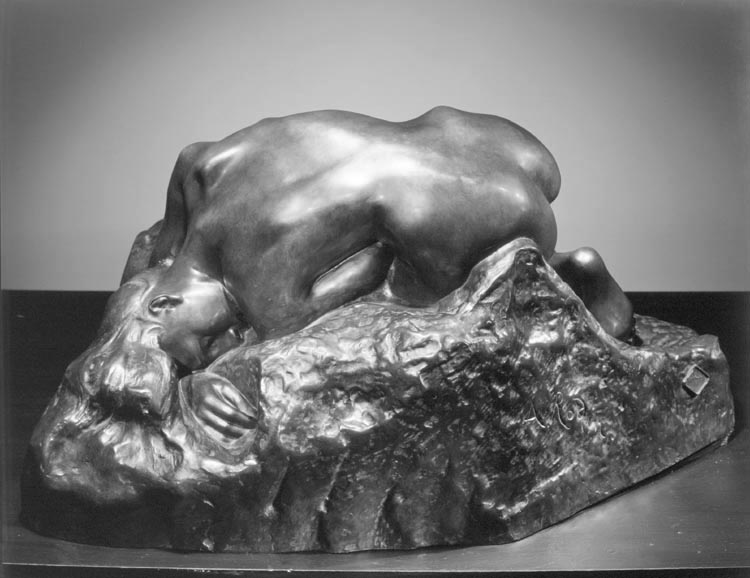 home
about
artists
exhibitions
press
contact
purchase
home
about
artists
exhibitions
press
contact
purchase |
|
AUGUSTE RODIN The Danaid Bronze, large version, 30 cm h (11 7/8 inches), conceived in 1885-1886
Rarely did Rodin exhibit a sculpture so immediately praised as The Danaid. Like Eternal Spring and The Kiss, this form is thoroughly traditional in subject and composition. Executed with great attention to form and to the continuity of unmarred curves, the work has a richness and mastery of finish that made its appeal universal. The Danaid represents one of the daughters of Danaus, king of Argos, who murdered their husbands on their wedding night and were condemned to fill sievelike vessels with water into eternity. For Rodin, the details of the narrative mattered less than the evocative qualities they contributed to his form. The German poet Rainer Maria Rilke, a great admirer of the sculptor, found himself immersed in the beauty and languid rhythm of the work: "The Danaid she who has cast herself down from her knees into her flowing hair. It is wonderful to pass about this marble slowly; the long, long way about the ich, unfolding curve of the back, to the face which loses itself in the stone as in a great weeping, to the hand which, like a final blossom, speaks gently one last time of life, deep within the eternal ice of the block."* The juxtaposition of extreme beauty and ultimate despair is in keeping with late romantic and symbolist themes. The subject recalls Henri Fantin-Latour’s voluptuous maidens, the temptresses of Gustave Moreau, and the women of Richard Wagner’s Rheingold. The Danaid has not been precisely dated. Rodin may have been at work on the figure as early as 1885. He did not specify his model, although a number of critics have suggested Camille Claudel. Visitors to the studio saw the work in finished form by 1888. After exhibiting a large plaster of the subject in the Salon of 1890, Rodin received a number of orders for versions in marble. A reduction in bronze was issued after 1900. * Rainer Maria Rilke, Rodin, trans. Robert Firmage (Salt Lake City, 1982), p. 46 |
